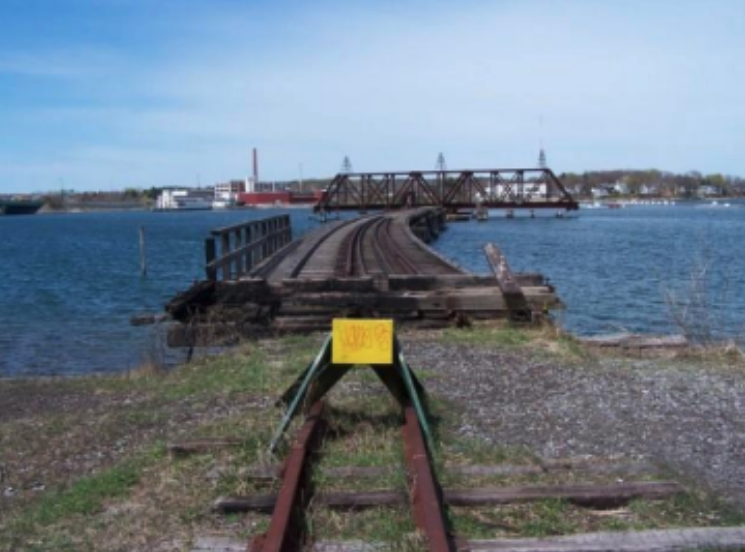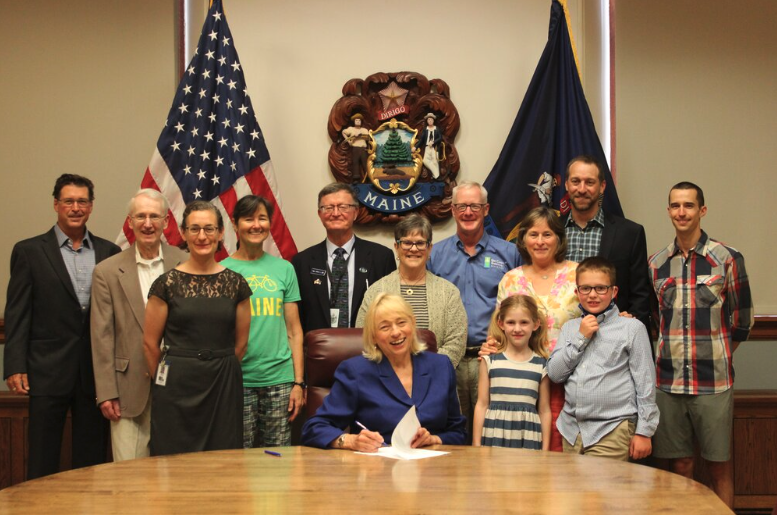An idea that began as a student paper for a University of Southern Maine class — examining the reuse of a discontinued railroad corridor for bicyclists and pedestrians — has evolved and grown to become Maine law.
“It’s kind of incredible,” said Izaak Onos, a 27-year-old graduate student in USM’s Muskie School of Public Service. “How it has all fallen together is really cool.”
It began with Onos’ school work.
An avid cyclist, Onos had become fascinated with a rail trestle on Portland’s Eastern Promenade, once linking the city’s peninsula with Martin’s Point. It offers a spectacular view of Back Cove and Portland Harbor but has sat unused for decades, with its pivoting steel bridge permanently in the open position.
To Onos, it reminded him of a busy bicycle and pedestrian bridge he saw in The Netherlands, where he studied abroad as a USM undergraduate.
“Seeing the similarities of size and scale between Portland and Nijmegen really got my idea mill going,” Onos said. He wrote a map-heavy, 13-page paper for a Geographic Information Systems (GIS) class, suggesting that the unused rail bridge and line stretching from Portland to Yarmouth transition into a cycling and walking corridor.
“It was just a paper for a class,” said Onos. At the time, he was working on his bachelor’s degree in Geography-Anthropology.

Then, he shared the paper with a friend.
His friend was Arthur Bell, a retiree who was working alongside Onos as a guide for a Portland bicycle tour company. He was impressed.
“I sent it around to the bike folks I know,” said Bell. Meanwhile, Bell was elected to represent Yarmouth in the Maine Legislature. Groups including the Maine Bicycle Coalition and the Maine Trails Coalition took interest and joined an effort to draft legislation.
Eventually, with Bell as a sponsor, a bill was created to examine four unused rail corridors in Maine for future privately funded development as bicycle and pedestrian paths. They included a line from Westbrook to Fryeburg, another from Augusta to Brunswick and one more from Ellsworth to Calais. Of course, they started with the Portland-to-Yarmouth section that Onos had originally examined.
“Izaak was the inspiration,” Bell said. “There’s no doubt about it.”
On June 15th, Gov. Janet Mills signed the bill, “Directing the Department of Transportation To Develop and Adopt an Active Transportation Plan,” into law. It mandates that the Maine Department of Transportation complete a study of all four rail areas and report back by January 2023.

For Onos, the signing of the bill into law was a proud moment. However, he is quick to point out that many people had a hand in the legislation. And, he is likely just beginning his work in the public sector.
In 2016, just months after he wrote the rail paper, he graduated from USM with his bachelor’s degree. He has since enrolled in the Muskie School’s master’s program in Policy, Planning and Management. He currently has about a year of studies remaining.
In the intervening years, he worked and made a cross-country bicycle trip, riding from Jacksonville, Florida, to San Diego, California. And while he still has his love of cycling, his horizons are widening.
“Professors have helped me step back and take a grander approach,” he said. He has also worked as a grad assistant in USM’s Office of Sustainability and has helped on projects aimed at reducing traffic on Maine roads.
“The opportunities at USM and the timing has been great,” Onos said.
Bell believes Onos is prepared for extraordinary things, he said.
“He’s just a great young man,” Bell said.

